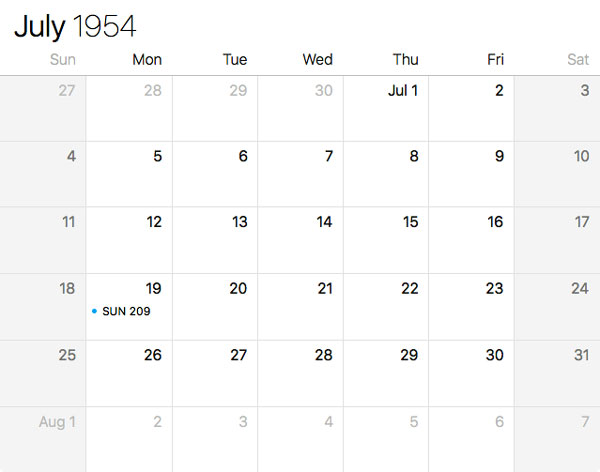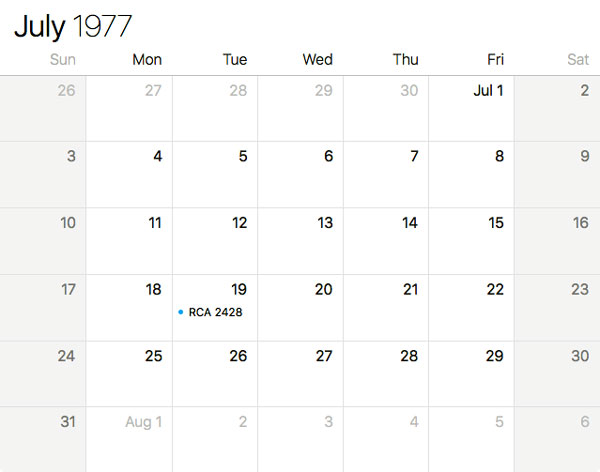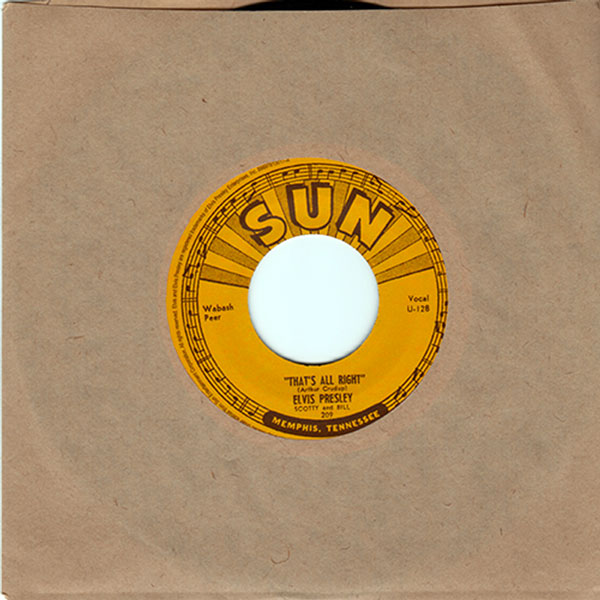This is Part 6 of an occasional series reviewing Elvis: The Complete Masters Collection. Read Part 5.
CD Vol. 8: Country Roots
This volume of The Franklin Mint‘s 36-disc Elvis: The Complete Masters Collection (mastered by Vic Anesini) presents songs that the booklet describes as follows:
“Elvis’ renditions of some of the biggest country songs ever. His tribute to country music and the legends who created it: Hank Williams, Red Foley, and many others.”
This sounds like a potential winner to me, but let’s see how it plays out.

Elvis: The Complete Masters Collection – Volume 8
01. I Love You Because: Of the 21 songs that make up this CD, the compiler could not have made a choice worse than “I Love You Because” to use as the lead-off track. When Elvis Presley made this recording at SUN Records in 1954, owner and producer Sam Phillips wisely rejected it. Shortly thereafter, Elvis, bassist Bill Black, and guitarist Scotty Moore “stumbled upon” the rock ‘n’ roll sound when horsing around with “That’s All Right.” Unfortunately, RCA Records – beginning a trend that would last for the rest of Elvis’ life – dug “I Love You Because” out of the rejects pile and issued a spliced version in 1956 not only on the Elvis Presley LP but as the A-Side of a single! The single failed to chart, and this recording is of interest only as a historical curiosity. (Recorded: 1954)
02. Blue Moon Of Kentucky: “Blue Moon Of Kentucky,” on the other hand, is a perfect representation of “Elvis Country.” A rhytym & blues-infused take on a country/bluegrass song, “Blue Moon Of Kentucky” served well as the B-Side of “That’s All Right” (a country-infused take on a rhythm & blues number). In some markets, “Blue Moon Of Kentucky” was more popular than the A-Side – likely because the song was a little more conventional for those audiences than the comparatively wild “That’s All Right.” (Recorded: 1954)
03. I’ll Never Let You Go: “I’ll Never Let You Go” is another 1954 SUN reject that RCA issued in 1956 on the Elvis Presley LP and as an A-Side single. While not stellar, this one is far more listenable than “I Love You Because.” This one features a slow start before eventually speeding up – a precursor of what Elvis would do not only on “Milkcow Blues Boogie” later that year, but also on live versions of “Hound Dog” years later in 1972. (Recorded: 1954)
04. How’s The World Treating You: “How’s The World Treating You” is a decent recording by Elvis. This one is slow and sleepy, as with the beginning of “I’ll Never Let You Go.” Unlike that track, however, this one stays slow and sleepy. (Recorded: 1956)
05. Old Shep: Elvis had been singing Red Foley’s “Old Shep” since childhood before he formally recorded it in September 1956. As a dog-lover, I find this melodramatic yet effective song hard to listen to at certain points in my life – depending on how my dog is doing at the time. I take these things to heart. A great, classic Elvis recording. (Recorded: 1956)
06. Your Cheatin’ Heart: I love Elvis’ take on Hank Williams’ “Your Cheatin’ Heart,” though I slightly prefer a more enthusiastic alternate take over this master. It would be years before Elvis made such an overtly country recording again. (Recorded: 1958)
07. A Fool Such As I: There is very little country left in Elvis’ iconic version of “A Fool Such As I,” a song that had been previously recorded by Hank Snow. (Recorded: 1958)
08. It’s A Sin: “It’s A Sin” was first recorded by Eddy Arnold in 1947. Elvis’ version is pretty, but a little lethargic for my tastes. (Recorded: 1961)
09. Just Call Me Lonesome: In addition to the How Great Thou Art sessions, another early sign of the comeback was Elvis returning to country music. “Just Call Me Lonesome” is a great representative of that return. What I love about “Elvis Country” is that instead of whining sounds sometimes associated with the genre, Elvis usually provides velvet vocals. (Recorded: 1967)
10. You Don’t Know Me: Elvis’ moving rendition of Eddy Arnold’s “You Don’t Know Me” was unfortunately buried on the Clambake soundtrack album. The first version I ever heard of “You Don’t Know Me” was actually by Ray Charles. The first time I heard it, in the original theatrical cut of Groundhog Day, I remember wishing that Elvis had recorded it. I was pleasantly surprised a few years later when the unknown-to-me Elvis recording surfaced on From Nashville To Memphis: The Complete 60s Masters I. Incidentally, Elvis also recorded a different version of “You Don’t Know Me” for the Clambake movie, but it is far inferior to this re-recording and was not released until after his death (other than in the actual movie). (Recorded: 1967)
11. I’m Movin’ On: Next up are some songs recorded at American Sound Studios in Memphis in early 1969, not long after the successful airing of the ELVIS television special. At first, “I’m Movin’ On” sounds a little too country, but then Elvis rocks into it to produce a spectacular version. (Recorded: 1969)
12. I’ll Hold You In My Heart (Till I Can Hold You In My Arms): “I’ll Hold You In My Heart” is an appealing little song that Elvis sings into the ground, ultimately going nowhere. (Recorded: 1969)
13. After Loving You: One of the huge highlights of the American sessions, “After Loving You” features the “new” Elvis at his best. Elvis had been playing around with this song at home for years, even taking a stab at piano on an earlier take at this session before giving up the keys. One of the best recordings of his career. (Recorded: 1969)
14. It Keeps Right On A-Hurtin’: “It Keeps Right On A-Hurtin'” is another pretty song that really does little to stand out among Elvis’ stellar 1969 recordings. (Recorded: 1969)
15. Little Cabin On The Hill: Versions of the next five songs were featured on the 1971 album I’m 10,000 Years Old: Elvis Country, often considered one of his finest. However, these mixes and edits are actually from the 1995 Walk A Mile In My Shoes boxed set. They do not match the original masters from Elvis Country. Here, Elvis launches into a Bill Monroe impersonation he had been fooling around with since at least 1956, as evidenced by the Million Dollar Quartet jam session. Good stuff. (Recorded: 1970)
16. I Really Don’t Want To Know: Elvis owns “I Really Don’t Want To Know,” one of the best on Elvis Country or any of his other albums. I love the piano work on this one by David Briggs. (Recorded: 1970)
17. Faded Love: I much prefer the shorter edit of “Faded Love” as released during Elvis’ lifetime than this overly long 1995 version. Anyway, Elvis does a fine, if forgettable, job on the Bob Wills classic. (Recorded: 1970)
18. Tomorrow Never Comes: Elvis delivers one of his most powerful performances on “Tomorrow Never Comes.” The song starts softly and slowly builds into a breathtaking, accusatory crescendo that Elvis actually had to re-record as an insert. Again, one of the very best songs of his career. (Recorded: 1970)
19. Make The World Go Away: I love hearing Elvis’ version of well-known songs, and “Make The World Go Away” is no exception. That voice. You gotta listen to James Burton on guitar on this one, too. Burton helped define the sound of Elvis’ final decade, and it is no wonder Elvis was reluctant to take the stage without him. (Recorded: 1970)
20. Green, Green Grass Of Home: I first heard Elvis’ version of “Green, Green Grass Of Home” on an RCA cassette tape I had in the 1980s called Elvis Country, one of two tapes by that name I owned – both of which had completely different lineups from each other as well as his 1971 album of the same name. Though recorded five years later for the Today sessions, this song would have fit in well on the real Elvis Country album as well. As with the much-maligned “My Boy,” this is the kind of dramatic song that often spoke to Elvis and that I, for one, enjoy hearing him sing. (Recorded: 1975)
21. Are You Sincere: Coming right after “Green, Green Grass Of Home,” Elvis’ voice sounds comparatively weaker on “Are You Sincere.” This goes against conventional Elvis wisdom, as this one was recorded two years earlier. They were recorded in different studios with different equipment, so any number of factors could be involved. Still, “Are You Sincere” is a worthy performance, first released on his 1973 album Raised On Rock. (Recorded: 1973)
While it contains a number of terrific country songs, the individual parts of this CD do not add up to a high-quality whole. Whether due to kicking off with the lackluster “I Love You Because” or the uneveness of the remaining selections, Country Roots never takes off as a compilation. Instead, it feels more random than anything else.
[Read Part 7.]









